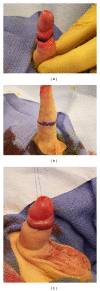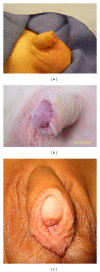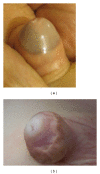Complications of circumcision
- PMID: 22235177
- PMCID: PMC3253617
- DOI: 10.1100/2011/373829
Complications of circumcision
Abstract
In the United States, circumcision is a commonly performed procedure. It is a relatively safe procedure with a low overall complication rate. Most complications are minor and can be managed easily. Though uncommon, complications of circumcision do represent a significant percentage of cases seen by pediatric urologists. Often they require surgical correction that results in a significant cost to the health care system. Severe complications are quite rare, but death has been reported as a result in some cases. A thorough and complete preoperative evaluation, focusing on bleeding history and birth history, is imperative. Proper selection of patients based on age and anatomic considerations as well as proper sterile surgical technique are critical to prevent future circumcision-related adverse events.
Keywords: Penis; child; circumcision; complications; inconspicuous; micropenis.
Figures








References
-
- Nelson CP, Dunn R, Wan J, Wei JT. The increasing incidence of newborn circumcision: data from the nationwide inpatient sample. Journal of Urology. 2005;173(3):978–981. - PubMed
-
- Hutcheson JC. Male neonatal circumcision: indications, controversies and complications. Urologic Clinics of North America. 2004;31(3):461–467. - PubMed
-
- US Dept of Health and Human Services. http://www.ahrq.gov/ - PubMed
-
- Lannon CM, Bailey AGD, Fleischman AR, et al. Circumcision policy statement. American Academy of Pediatrics. Task Force on Circumcision. Pediatrics. 1999;103(3):686–693. - PubMed
-
- Rushton HG, Majd M. Pyelonephritis in male infants: how important is the foreskin? Journal of Urology. 1992;148(2):733–736. - PubMed
Publication types
MeSH terms
LinkOut - more resources
Full Text Sources
Medical

